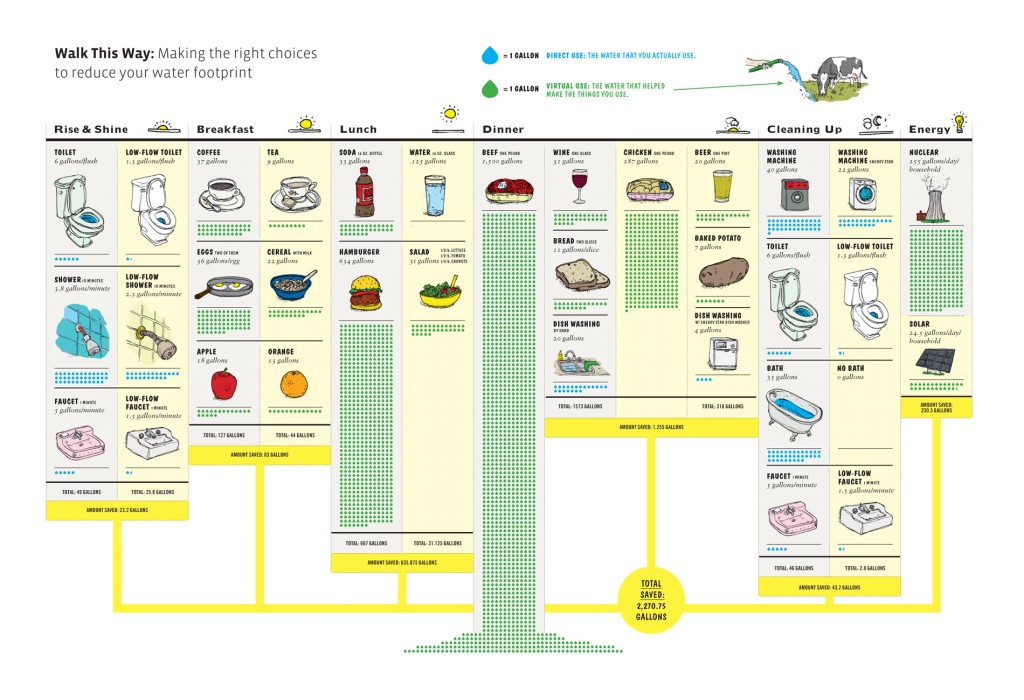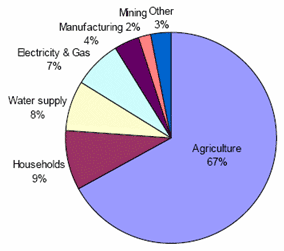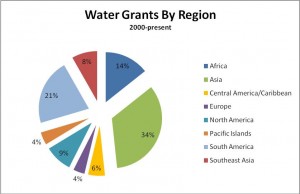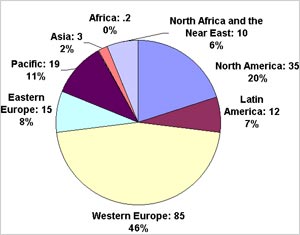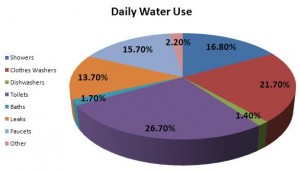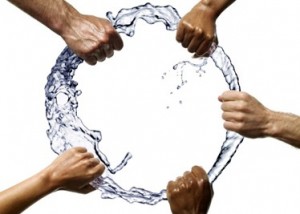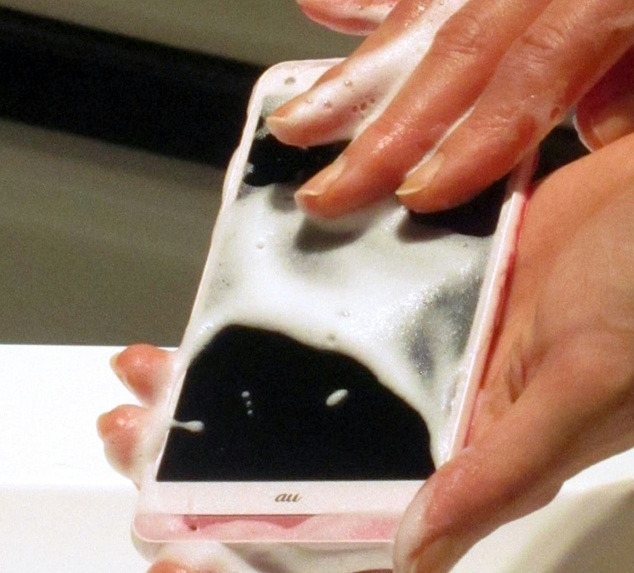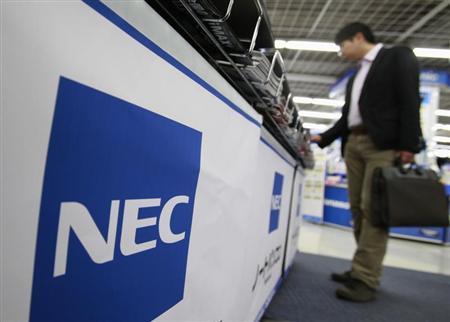Use Sea Water: Bangladesh & Maldives will not go under the Sea / Special Report from e-News®
Dhaka, Bangladesh,
Introduction: Global warming is the biggest threat for the World. In 21 century the World average temperature will rise 1.8 Degree to 4 Degree Celsius. The scientists all over the World are very concerned about the global warming and sea level rise. They reported that by next 90 years the Glaciers of Antarctica, Greenland, Tibet and the Himalaya will melt significantly. They also predict that, if Ocean temperature just rises 5 by Degree, all west Antarctica ice will fully melt and the sea level would rise by 5 meters. At present temperature trend by 2050 sea level will rise 1 meter. Maldives, southern part of Bangladesh and Kiribati will go under water. About 80 to 100 million people would become climate refugee.
The World is very much concerned about the environmental problems. It is not problems for certain country or region. It is the problem of whole World. So, we all have to solve the problem. But only reducing carbon emission is not the solution. World population is growing at very high rate. By 2050 additional three billion people would add with present population. So with the carbon emission, we have to find out alternatives. Sea water use will be the best alternative. This Research shows that, every year total melting water from Glaciers is about 12000 to 16000 cubic km. World can protect sea rise by using sea water. If the World Nations use 12000-15000 cubic km sea water per year, Sea level will never rise. The process is very easy but expensive. Just desalinize sea water and use for irrigation, drinking water, industrial and house hold purpose.
At present Cancun summit in Mexico is going on. United Nations should take political decision to install thousands of Desalination Plants on the sea shore all over the World. The World’s largest Desalination Plant is situated at Jabel Ali in Saudi Arabia. It produces 300 million cubic meter of water per year. After desalination water is pumped into 200 miles inland through pipeline to the capital city Riyadh. Actually we need about 30,000 desalination plants as Jabel Ali. It could cost about 50 trillion dollars to install those plants.
Sea Level Rise Observation: A team of NASA and university scientist has found clear evidence that extensive areas of snow melted in west Antarctica in January 2005 in response of warm temperature. This was first widespread Antarctica melting ever detected with NASA’s satellite and the most significant melting was observed using satellites during the past three decades.
If sea temperatures rise just 5 degree the West Antarctica ice would fully melt. The collapse of the West Antarctica would eventually raise World sea levels by around 5 meters. But we don’t take preventive measures yet. The UN Climate Panels have forecasted at the World temperature will rise up to 1.8 to 4 Degree Celsius by 2100.
The Greenland Ice cap is even more vulnerable to global warming. If it melts the sea level would rise all together by 12 meters. Then it would destroy most of the World.
Tibet and the Himalaya are known as the third pole of the world. The plateau and mountains contain 37000 glaciers. Some of them are around 700000 years old. Together they contain the largest ice body outside of the Arctic and the Antarctica. The US Geological Survey (USGS) reported that Himalayan Glaciers cover about three million hectares or 17% of the mountain area. The Himalayan Glaciers snow fields store about 12,000 km Cubic fresh water. About 15,000 Himalayan Glaciers from a unique reservoir that supports perennial rivers such as the Ganges, the Indus and the Brahmaputra which, in turn, are life line of millions of people in south Asian countries (Pakistan, Nepal, Bhutan, India and Bangladesh)
According to UN climate report Himalayan glaciers are sources of Asia’s biggest rivers the Ganges, the Indus, the Brahmputtra, the Yangtze, the Mekong, the Salween and yellow. Those rivers could disappear by 2050 as temperature rise. All south Asian countries will face food crisis because of shortage of surface water. Only in India, the Ganges provides food and drink for 500 million people. The west coast of North America will face same problems. Sierra Nevada gets water from Rocky Mountain.
Antarctica has thirty million cubic kilometers of ice. If this ice is melted, global sea level may rise by an estimated 65 meter. At present global warming trend it could take 6000 to 10000 years to melt all ice in Antarctica.
According to Reuter, melting mountain is a ‘Time Bomb’. Glaciers and mountain snow have been melting earlier in the year than usual, meaning the water scarcity begins. When millions of people need it during the summer as rainfall is insignificant.
How Much Water We Have : The US Geological Survey (USGS) has identified the total quantity of water. It is estimated about 1,386,000,000 cubic kilometers. 1,338,000,000 cubic kilometers stored in oceans. Seventy percent of Earth surface is covered with water. On that, 97% of that water is sea water. Only 3% is fresh water. The ice sheets arte average 2700 meters (9000 feet) thick. Recorded temperature between (-)13 degree to (-)82 Degree. Average temperature is (-) 49 Degree. Snow accumulation is about 20 centimeters. Average wind is 12.3 miles per hour.
The amount of Ocean water is very big but not infinitive. Every day we are using almost same amount of water as melting from Glaciers. Sea water is rising. But we don’t know what to do? We must come forward and do something. Use sea water for everything. Then the nations will not face big catastrophe as civilization drowned in the sea.
A crisis is looming over water shortage worldwide. By 2025 more than half of the nations in the world will face fresh water stress or shortage. By 2050 as much as 75% of the world population could face fresh water scarcity. (Terra Daily, Carolyn Baker) So, there is no alternative of sea water. We must use sea water. But the early we start is better.
Where to Start : According to Inter Governmental Panels for Climate Change (IPCC) World per capita water supply is about 1700 cubic meters per year. On that for Agriculture 67%, House hold 9%, Water Supply 8%, Electricity & Gas 7%, Manufacturing 4%, Mining 2% and others 3%. If we get the IPCC as standard world annual water consumption for nearly 7 billion people is about 12000 cubic kilometers. On that water 67% uses for agriculture. The amount of water for agriculture per year is about 8000 Cubic Kilometers. To protect sea rise we must use most of the water from the Ocean.
Bangladesh, Maldives and Kiribati will be the mostly affected country for climate change. Sea water agriculture should start from there. United Nations and developed country of the world should make a decision to use Sea Water everywhere. To encourage it, UN could raise climate fund and give subsidies for sea water use.
Increase Irrigation Area and Irrigate by Sea Water : World arable land is 41.4 million square kilometers. But under irrigation is only 2770980 square kilometers (Profile of the World, 2009). The productivity of irrigated land is 3.6 times that of un-irrigated land. The monetary value of irrigated crops is 6.6 times higher than un-irrigated one.
In sub-Saharan Africa the amount of arable land is 11,194920 square kilometer. But only 1576080 square kilometer under irrigation. If we just irrigate half of the land by the Atlantic’s water, the sea level will go down.
Desalination: Water Desalination is very old system. Modern desalination is costly. It’s 3 times costly than normal water but 10 times cheaper that bottles water.
Fresh water – less than 1000ppm
Slightly saline water- From 1000ppm to 3000ppm
Moderately Saline water- from 3000ppm to 10000ppm
Highly Saline water- from 10000ppm to 33000ppm
There are about 13000 desalination plants in the world in 120 countries. It produces 14 million m3 fresh water per day. It is less than 1% of World total consumption. The most important users of desalination water are Saudi Arabia, Kuwait, UEA, Qatar, Bahrain, Libya, Algeria and USA. Now we need 30,000 big Desalination Plants on the bank of Atlantic, Pacific and Indian Ocean.
Cost of Desalination :
Israel desalinize water cost 53 cent per cubic meter
Singapore desalinize water cost 49 cent per cubic meter
USA desalinize water cost 81 cent per cubic meter
To desalination for 12000 cubic kilometer water cost about 5 to 6 trillion dollars. But additional cost would be 2-3 trillion dollars. If wee desalinize water by Hydro-electric dual desalination plant, the cost will be very cheaper.
China and Israel is the Pioneer : China and Israel already started irrigation with sea water. In China Dongying and Binzhon countries where sea water was first introduce for irrigation reported an annual increase of millions of kilogram agricultural output.
Israel’s land primarily consisted of desert until the construction of desalination plants along the country’s coast. The desalination plants which remove the salt from ocean water have created new source of water for farming, drinking and washing.
Environment Vulnerable Bangladesh : In Bangladesh total arable land is 8.44 million hectares. About 6 million hectares land under irrigation (Ministry of Agriculture, Bangladesh). About eighty percent of irrigation depends on underground water. For that, underground water level going down very fast. But downward underground water level is now big threat of Heavy Earthquake for big cities including Dhaka, Sylhet, Chittagong (Bangladesh Agricultural Development Corporation). Furthermore, because of underground water; nearly 40 million people are in Arsenic risk. Experts say, ground water over drafting is usually politically unpopular. This strategy reduces crop output and it is not the real solution.
Bangladesh must use sea water for agriculture. Today or tomorrow we Sea water will be ultimate solution. Because underground water is going to finish very shortly. After few years, there is a big possibility underground water would be saline water. Surface water also is running out. Most of the major rivers get water from the Himalaya. But by 2050, all big rivers including the Padma, the Bramaputra, the Meghna and the Jamuna would dry. At present Himalaya discharges about 35, 5000 cubic meters water per year. But After 2050, there will not be any Glacier on the Himalaya. So, in future sea water will be the major source of water for Bangladesh
Fresh Water Crisis : The World average rainfall decrease 7.5% by last 100 years. For that Australia, India, China, Russia, Africa and America are facing severe drought problem. Australia’s decade long drought likely to worsen. The Murray-Darling river system, which produces 40 percent of Australia’s fruits, vegetables and grain, is facing big threat. A decade below average rainfall country is facing economic and ecological crisis (Water: World crisis, by Sarah Meyer, 2008).
We have now about seven billion people and it is growing fast. People are moving to the coast to coast to live and build vast cities. But the sea raises substantial number of meters, whether pattern undermines food production and major rivers dry up as glaciers disappear. For example, the Ganges estimated to be 70% glacial flow during the summer. But After 2050, the Ganges will be disappeared. Because, there will not be any Glacier on the Himalaya.
By 2050 world population will be 10 billion. There will be a big crisis of water. Unless population growth can be slowed quickly there will no water for everyone.
World is facing fresh water problem. About one-sixth of the World’s population, lack access to safe drinking water. Aquifers under Beijing, Delhi, Bangkok and dozens other rapidly growing urban areas are drying up. The river the Ganges, the Jordan, the Nile, and the Yangtze- all dwindle to trickle for much of the year. The Aral Sea has shrunk to a quarter of its former size, leaving behind a salt –crusted waste (Water: World crisis, by Sarah Meyer, 2008)
Current World water crisis is well documented. 1.2 billion People are without access to safe water. 2.6 billion People are without access to sanitation. Nearly two million children die every year because they don’t have adequate supply of clean water (Water: World crisis, by Sarah Meyer, 2008)
A crisis is looming over water shortage Worldwide. By 2025 more than half of the nations in the World will face fresh water stress or shortage. By 2050 as much as 75 percent of the World’s population could face freshwater scarcity (Teraa Daily, Caroline Baker, 03.04.08).
According to the California Department of water resources, if we can’t supply more water by 2020 world will face severe water crisis. Furthermore, most of the country would be food grain importer and price will be high. Within 10 years China and India needs to import food grain because of water shortage.
Take Lesson from History : During the last Ice Age glaciers covered almost one-third of Earth land mass, with the result being that ocean were about 400 feet lower than today. During the last global “Warm Spell” about 125000 years ago seas were about 18 feet higher than they are now. About 3 million years ago the ocean could have been up to 165 feet higher. (The US Geological Survey). There were about 100 million years ago, when the Dinosaur lived. It was warm age.
Recommendations : Take additional three million square kilometer land under irrigation in Africa, America, Canada, Asia and Australia. Irrigate it by sea water through pipe line. With latest technology Manage to pass big amount of sea water from the ocean to rivers and canals and desalinize it before leaving ocean. Introduce cheaper technology for Desalination plant. Try to introduce dual project as Desalination and hydro power. United Nations should take decision and pass the act to use sea water mandatory basis.
Benefits of Sea Water Use
a) The amount of sea water is very big; the World can use it as much as it needs without any question
b) Prevent Sea level rise
c) Solve World drinking water problem.
d) Increase production of food grain and solve future food shortage.
e) Increase Forestry so that Global temperature would decrease.
f) Desalination and hydro power dual project can be very profitable for next decade.
g) Generate Billions jobs for all over the World.
h) Prevent famine in Africa by creating jobs and producing food grain.
Reference
a) Frozen Earth: The once and Future Study of Ice Ages, by Douglas Macdugall, University Of California Press-2006
b) Water : World Crisis, Research Paper no-2, 2008, by Sarah Meyer
c) Water-by Climate Institute, Washington Dc, USA
d) Inter Governmental Panel for Climate Change Research, 2007
e) Science Daily, March 2, 2008, USA
f) Water Cycle-United States Geological Survey, USA
g) Water Profile of Bangladesh, Food and Agricultural Organization (FAO)
AUTHOR : Meer Moniruzzaman
Executive Director, Widow-Foundation
Dhaka, Bangladesh







